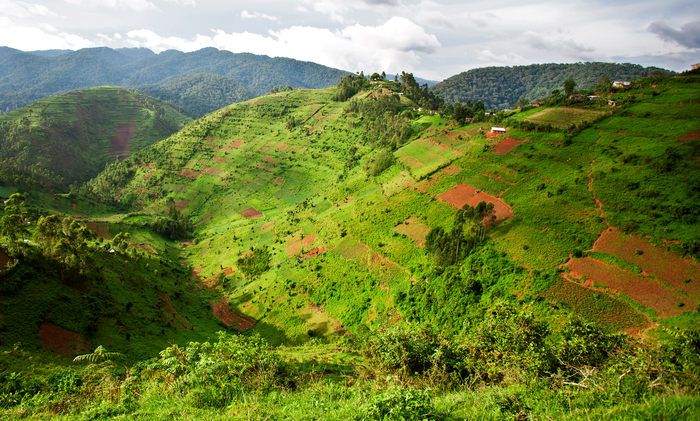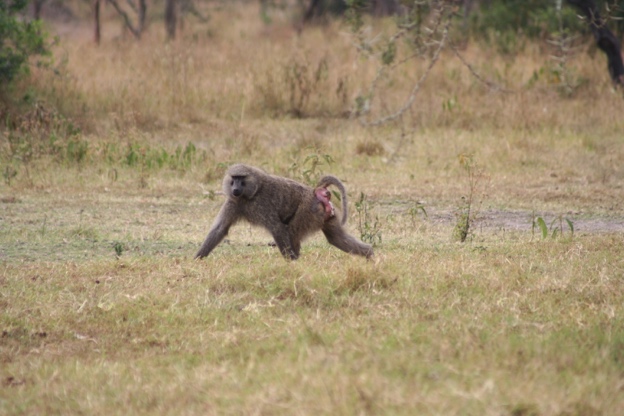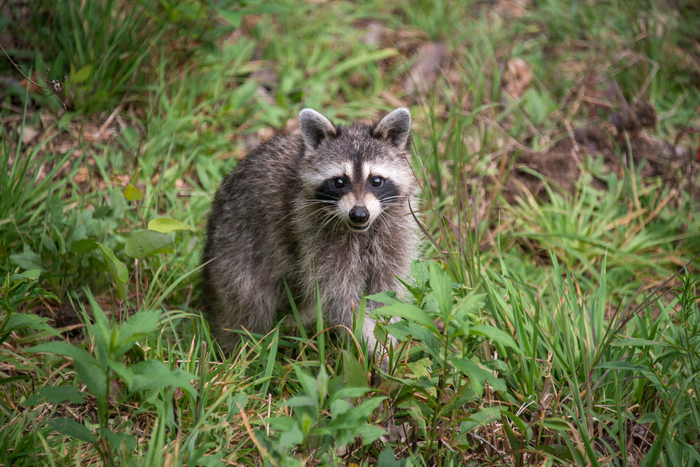You hear a lot about resilience these days—for good reason. Our planet is undergoing profound ecological and climatological change, and we are now unequivocally in a geochemically distinct epoch (Anthropocene) with its own unique signature of human-produced aluminum, concrete, and plastics—direct by-products of the “Great Acceleration of population growth, industrialization, and mineral and energy use” (Waters et al. 2016: 2622). The resilience of species—including human—to this Great Acceleration has received considerable attention of late by social scientists, although the concept as applied to ecological systems has been around for several decades. As originally conceived by Holling (1973), ecologists define resilience as “the capacity of a system to absorb disturbance and reorganize while undergoing change so as to still retain essentially the same function, structure, identity, and feedbacks” (Walker et al. 2004: 5). However, it is not my goal to explore resilience per se; many superb reviews and analyses already exist (e.g., Jacka 2015). Instead, here I explore the irony of resilience from the perspective of human antipathy toward “pest” species.
That humans yearn for wild places and interaction with animals is attested to by forums such as Facebook, Twitter feeds, and lists of best-selling nonfiction books (Animals in Translation 2005; Do Unto Animals 2015). Antidotes to our estrangement from the natural world are read avidly (e.g., Last Child in the Woods: Saving our Children from Nature-Deficit Disorder 2008), and some of the most popular films of the past few years have centered on humans getting back to nature (e.g., Wild, A Walk in the Woods, Into the Wild). Yet, despite a yearning for “all things wild” and “the way things were,” it has been my observation that it is, ironically, some of the most resilient (wild) species that are viewed with the greatest antipathy—not just in the United States but around the world.
I have friends who I know treasure their pets and the natural world but who also complain bitterly about the “fiendish” gray squirrels (Sciurus caronlinensis) that visit their birdfeeders, resorting (in one memorable example) to the use of a slingshot before I frantically intervened on behalf of the squirrel. The very words that we use to entitle such species (“weeds,” “pests,” “vermin,” “nuisance”) invoke images of invasion, corruption, matter out of place, dirtiness. Pigeons are called “flying rats” and Canadian geese “flying carp.” Some of these species are exotic and literally matter out of place (e.g., feral hogs in the United States, Sus scrofa); others, such as rats (Rattus norvegicus), carry with them long-embedded connotations of disease (plague). In such cases, antipathy may be interpreted in light of historical circumstance. In other examples, the source of the antipathy is not so obvious as in the case of native species such as raccoons (Procyon lotor), now reduced to “cockroach status” (McCombie 1999: 8; Hadidian 2015).
Where do resilient species fit in our yearnings for “all things wild” and “the way things were”? The reality is that in many cases we cannot afford ourselves the luxury of thinking about how to get back whence we came, ecologically. Ecologists and conservation biologists are coming to terms with this (e.g., Chazdon 2014), transitioning from notions of “primary habitat” to one that focuses on the role of disturbed or secondary (regenerating) habitat—circumstances in which resilient species may have the most important roles to play. While protected parks and those rare, uncolonized regions of the planet must remain protected, we simultaneously need to embody alternative visions of the future of anthropogenic landscapes and the ecological roles of resilient species in those landscapes.

I will use my work and the work of colleagues as examples and illustrate how animals impact forest regeneration. For twenty-five years, I have been documenting the incredibly important roles that monkeys and apes play in tropical forests through the simple act of feeding themselves (Lambert 2011; see here for references). While most primate species will consume insects and a bit of meat for fats and proteins, the vast majority of their foods come from plants. And most primates prefer ripe fruit over just about everything else. Plants have their own goals: they need to ensure the survivorship of their offspring (seeds). As it turns out, the best place for this is some place far away from the parent plant, where seeds are more likely to avoid predators and pathogens. In tropical forests, over 95 percent of tree species require animals to move their seeds, and in Kibale National Park, Uganda, and elsewhere in Africa, primates are particularly important: they are large, eat a lot of fruit, and move seeds just the right distance for germination. The implications of this plant–animal process extends far beyond the forest boundary and indeed impacts human livelihoods. I have found that humans use almost half of the primate-dispersed plant species in Kibale for medicine, timber, construction, or ritual practice (Lambert 1998). My students and colleagues have found similar patterns in Ivory Coast and Nigeria (Kone et al. 2008; Effion et al. 2013).
Please let me note—emphatically—that I do not believe we need to justify the significance of animals in terms of the so-called ecosystem services they provide to humans; animals have inherent value (Bekoff 2014; Ramp and Bekoff 2015; also, see more about compassionate conservation here). Nonetheless, the reality is that those species most likely to facilitate habitat regeneration in degraded landscapes are typically notorious “pests” from the perspective of local stake-holders because these species tend to be behaviorally flexible and tolerant of human presence. For example, baboons (Papio anubis) are among the most disliked animal species in sub-Saharan Africa (Pai and Aliwo 2014). Unlike many other primate species, they also cope with changing landscapes quite well, travel through diverse landscapes, and disperse seeds into abandoned gardens as they range, thereby facilitating regeneration of habitat.

These plant–animal–human interactions are ecologically significant not only in the tropics. Much of the United States comprises fragmented habitat and complex mosaics of managed forest, rangeland, agricultural fields, orchards, pastures, and houses with gardens and lawns. Such landscapes are highly spatially heterogeneous in terms of vegetation structure and composition, degree of perturbation, successional stage, and management, and many of the native species that move seeds into regenerating areas are those very species often abhorred by us, indeed trapped, persecuted, and hunted (e.g., raccoons, opossum, javelinas, coyote, black bear, foxes; Roehm and Moran 2013; Willson 1993). Despite the reality that urban areas are biodiversity hotspots (Ives et al. 2016), we know virtually nothing about how fruit-eating and native “nuisance” species disperse seeds and what their significance is in the regeneration of human-modified landscapes.
When confronted with this irony (i.e., that the most resilient animals species are also those that humans are most likely to persecute and also the ones we need most to regenerate “wild”), I am left wondering whether this antipathy is not a reflection of some nascent species’ self-recognition. After all, familiarity breeds contempt, and are we not the most resilient species of all?
Joanna E. Lambert is a professor of biological anthropology at the University of Colorado Boulder. Joanna has a deep passion for our wild and natural world, resulting in a career spent publishing and teaching about the evolution, ecology, and conservation of wild primates and, more recently, Carnivora. She has been working at her primary field site, the Kibale National Park, Uganda, since 1991. You can learn more about her work at her website: www.joannalambert.com.
References
Bekoff, Marc 2014. Rewilding Our Hearts: Building Pathways of Compassion and Coexistence. Novato, CA: New World Library Publishing.
Chazdon, Robin L. 2014. Second Growth: The Promise of Tropical Forest Regeneration in an Age of Deforestation. Chicago: University of Chicago Press.
Effiom Edu O., et al. 2013. “Bushmeat Hunting Changes Regeneration of African Rainforests.” Proceedings of the Royal Society B 280, no. 1759: doi: 10.1098/rspb.2013.0246.
Grandin Temple, and Catherine Johnson. 2005. Animals in Translation: Using the Mysteries of Autism to Decode Animal Behavior. New York: Simon & Schuster.
Hadidian, John. 2015. “Wildlife in U.S. Cities: Managing Unwanted Animals.” Animals 5: 1092–1113, doi: 10.3390/anni5040401.
Holling, C.S. 1973. “Resilience and Stability of Ecological Systems.” Annual Review of Ecology and Systematics 4: 1–23, doi: 10.1146/annurev.es.04.110173.000245.
Ives Christopher D., et al. 2016. “Cities Are Hotspots for Threatened Species.” Global Ecology and Biogeography 25, no. 1: 117–126, doi: 10.1111/geb.12404.
Jacka, Jerry K. 2015. Alchemy in the Rainforest: Politics, Ecology, and Resilience in a New Guinea Mining Area. Durham, NC: Duke University Press.
Kone, Inza, Joanna E. Lambert, Johannes Refische, and Adama Bakayoko. 2008. “Primate Seed Dispersal and Its Role in Maintaining Useful Tree Species in the Taï Region, Côte-d’Ivoire: Implications for the Conservation of Forest Fragments.” Tropical Conservation Science 1, no. 3: 293–306. Available online.
Lambert, Joanna E. 1998. “Primate Frugivory in Kibale National Park, Uganda, and Its Implications for Human Use of Forest Resources.” African Journal of Ecology 36, no. 3: 234–240, doi: 10.1046/j.1365-2028.1998.00131.x.
Lambert, Joanna E. 2011. “Primate Seed Dispersers as Umbrella Species: A Case Study from Kibale National Park, Uganda, with Implications for Afrotropical Forest Conservation.” American Journal of Primatology 73, no. 1: 9–24, doi: 10.1002/ajp.20879.
Louv, Richard. 2008. Last Child in the Woods: Saving our Children from Nature-Deficit Disorder. Chapel Hill, NC: Algonquin Books.
McCombie, Brian. 1999. “Those Dirty Raccoons.” Field and Stream 104, no. 8: 8.
Pai, Murali, and Seada Aliwo. 2014. “A Survey of Attitudes towards Human-Baboon Conflicts in a University Campus in Ethiopia.” Journal of Biodiversity Management and Forestry 3: 4, doi: 10:4172/2327-4417.1000131.
Ramp, Daniel, and Marc Bekoff. 2015. “Compassion as a Practical and Evolved Ethic for Conservation.” BioScience 65: 323–327, doi: 10.1093/biosci/biu223.
Roehm, Katherine, and Matthew D. Moran MD. 2013. “Is the Coyote (Canis latrans) a Potential Seed Disperser for the American Persimmon (Diospyros virginians)?” The American Midland Naturalist 169, no. 2: 416–421, doi: 10.1674/0003-0031-169.2.416.
Stewart, Tracey. 2015. Do Unto Animals: A Friendly Guide to How Animals Live and How We Can Make Their Lives Better. New York: Artisan Publishers.
Walker, Brian, C.S. Holling, Stephen R. Carpenter, Ann Kinzig. 2004. “Resilience, Adaptability and Transformability in Social-ecological Systems.” Ecology and Society 9, no. 2: 5. Available online.
Waters, C.N., et al. 2016. “The Anthropocene is Functionally and Stratigraphically Distinct from the Holocene.” Science 351, no. 6269: 1–10, doi: 10.1126/science.aad2622.
Willson, Mary F. 1993. “Mammals as Seed-dispersal Mutualists in North America.” Oikos 67: 159–176, doi: 10.2307/3545106.
Cite as: Lambert, Joanna E. 2016. “Regeneration of Human-Modified Landscapes and the Irony of Antipathy toward Resilient Animal Species.” EnviroSociety. 19 January. www.envirosociety.org/2016/01/regeneration-of-human-modified-landscapes-and-the-irony-of-antipathy-toward-resilient-animal-species.

